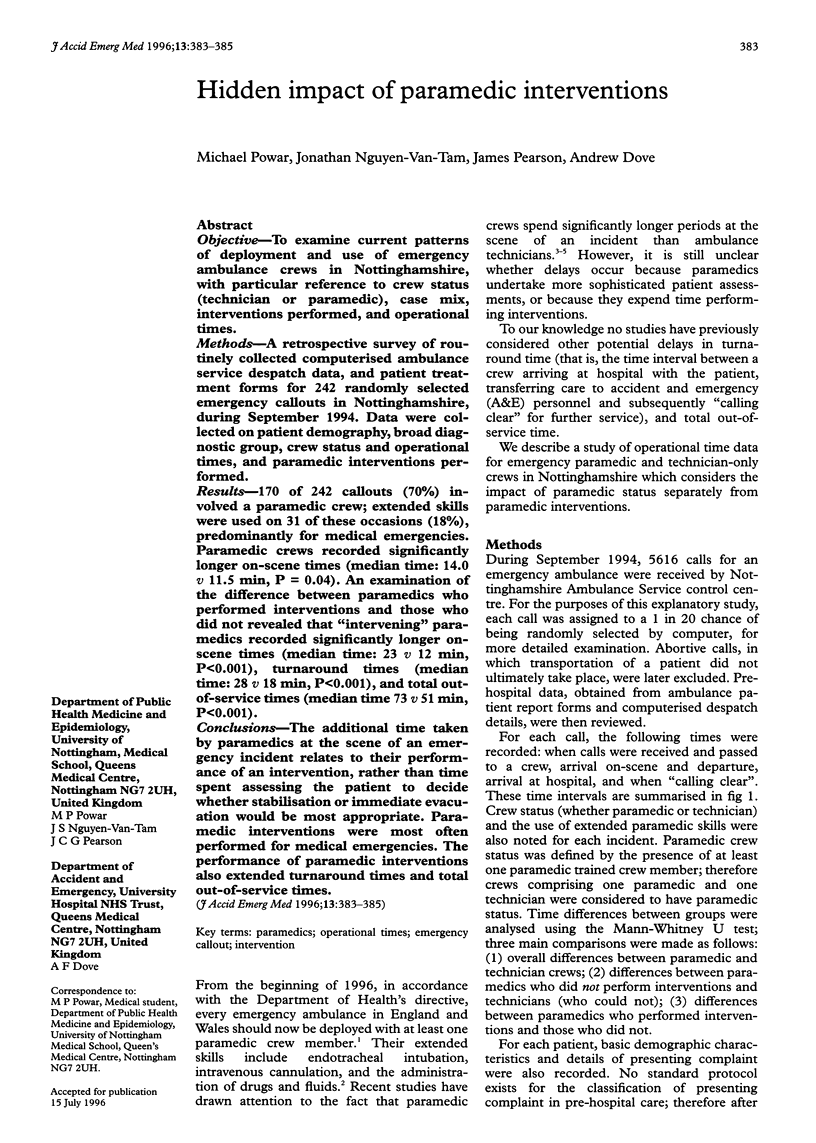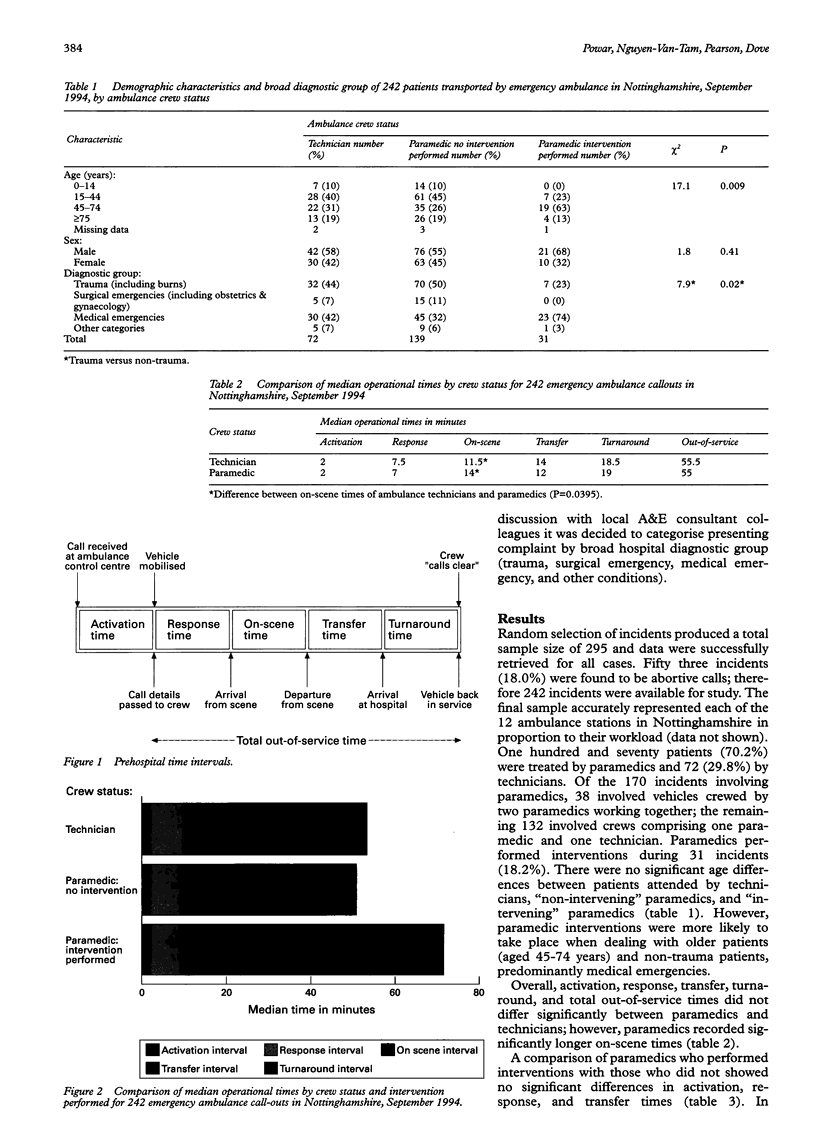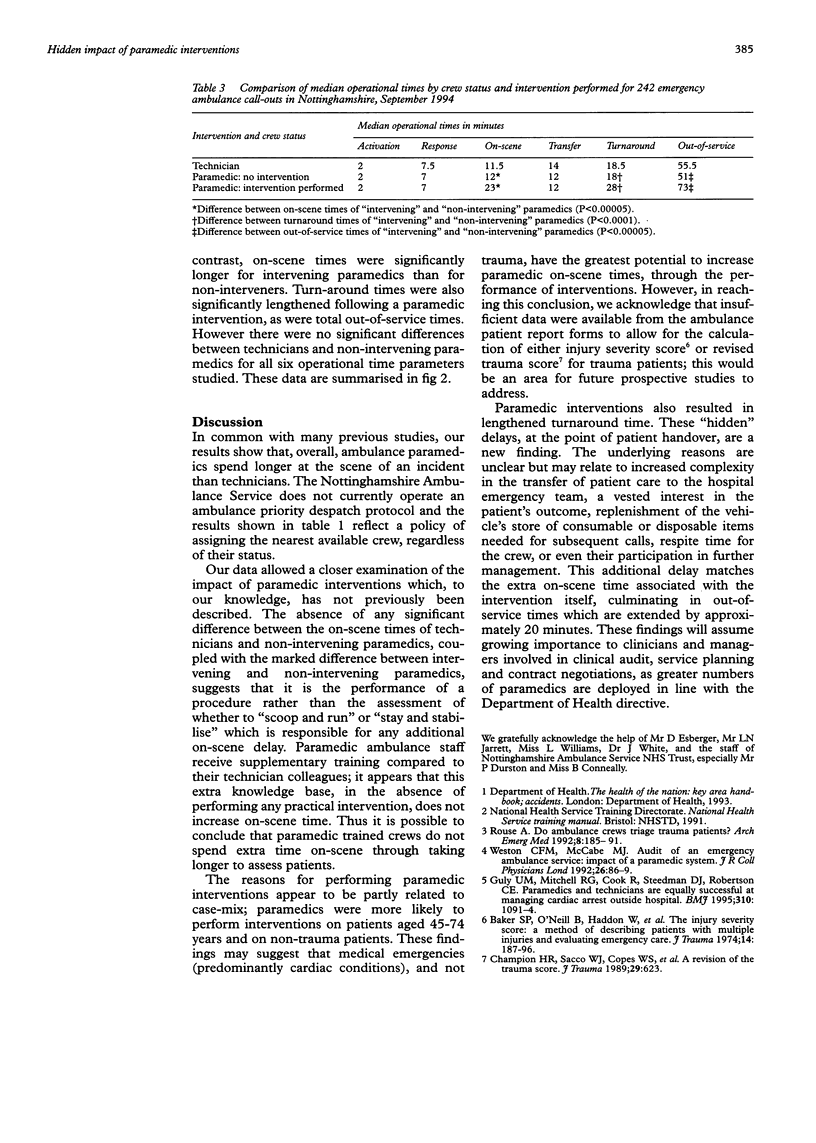Abstract
OBJECTIVE: To examine current patterns of deployment and use of emergency ambulance crews in Nottinghamshire, with particular reference to crew status (technician or paramedic), case mix, interventions performed, and operational times. METHODS: A retrospective survey of routinely collected computerised ambulance service despatch data, and patient treatment forms for 242 randomly selected emergency callouts in Nottinghamshire, during September 1994. Data were collected on patient demography, broad diagnostic group, crew status and operational times, and paramedic interventions performed. RESULTS: 170 of 242 callouts (70%) involved a paramedic crew; extended skills were used on 31 of these occasions (18%), predominantly for medical emergencies. Paramedic crews recorded significantly longer on-scene times (median time: 14.0 v 11.5 min, P = 0.04). An examination of the difference between paramedics who performed interventions and those who did not revealed that "intervening" paramedics recorded significantly longer onscene times (median time: 23 v 12 min, P < 0.001), turnaround times (median time: 28 v 18 min, P < 0.001), and total out-of-service times (median time 73 v 51 min, P < 0.001). CONCLUSIONS: The additional time taken by paramedics at the scene of an emergency incident relates to their performance of an intervention, rather than time spent assessing the patient to decide whether stabilisation or immediate evacuation would be most appropriate. Paramedic interventions were most often performed for medical emergencies. The performance of paramedic interventions also extended turnaround times and total out-of-service times.
Full text
PDF


Images in this article
Selected References
These references are in PubMed. This may not be the complete list of references from this article.
- Baker S. P., O'Neill B., Haddon W., Jr, Long W. B. The injury severity score: a method for describing patients with multiple injuries and evaluating emergency care. J Trauma. 1974 Mar;14(3):187–196. [PubMed] [Google Scholar]
- Champion H. R., Sacco W. J., Copes W. S., Gann D. S., Gennarelli T. A., Flanagan M. E. A revision of the Trauma Score. J Trauma. 1989 May;29(5):623–629. doi: 10.1097/00005373-198905000-00017. [DOI] [PubMed] [Google Scholar]
- Guly U. M., Mitchell R. G., Cook R., Steedman D. J., Robertson C. E. Paramedics and technicians are equally successful at managing cardiac arrest outside hospital. BMJ. 1995 Apr 29;310(6987):1091–1094. doi: 10.1136/bmj.310.6987.1091. [DOI] [PMC free article] [PubMed] [Google Scholar]
- Rouse A. Do ambulance crews triage trauma patients? Arch Emerg Med. 1991 Sep;8(3):185–191. doi: 10.1136/emj.8.3.185. [DOI] [PMC free article] [PubMed] [Google Scholar]
- Weston C. F., McCabe M. J. Audit of an emergency ambulance service: impact of a paramedic system. J R Coll Physicians Lond. 1992 Jan;26(1):86–89. [PMC free article] [PubMed] [Google Scholar]



